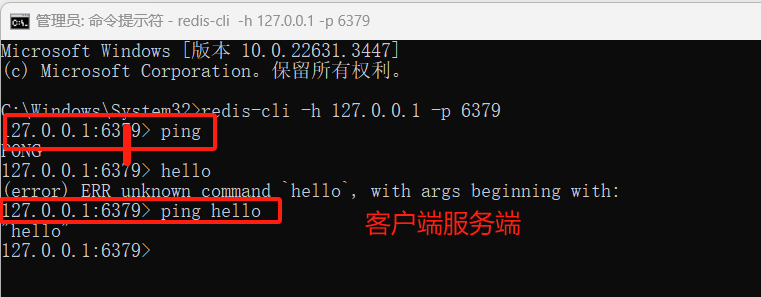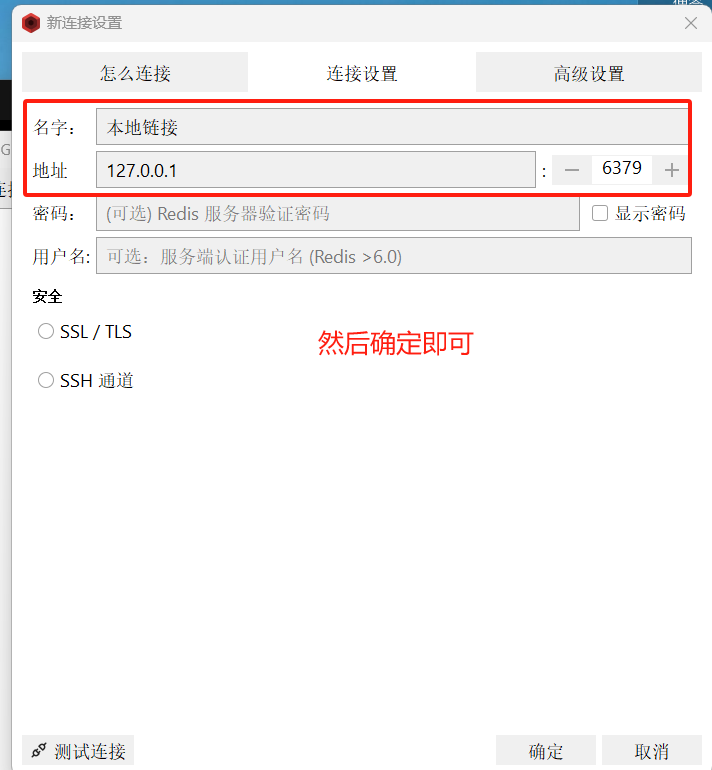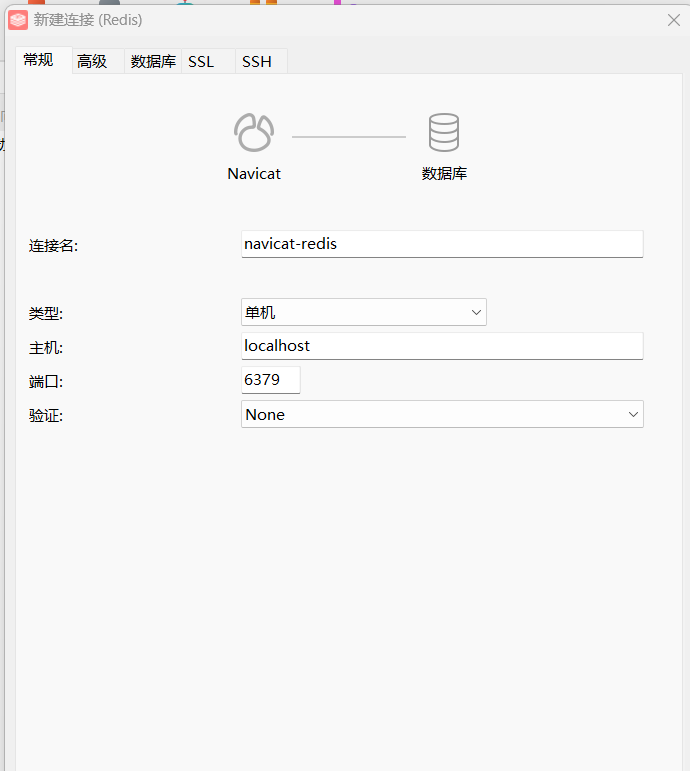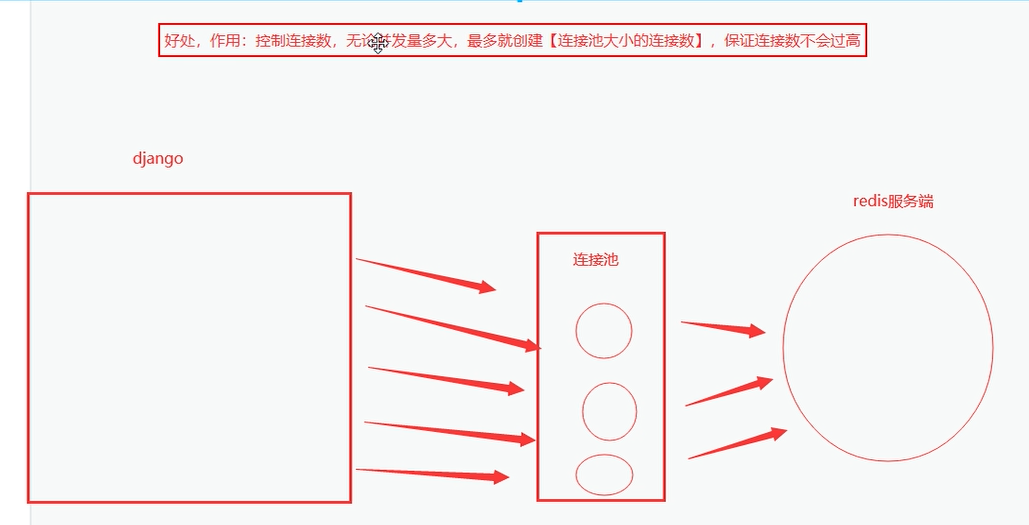redis介绍安装
# 0 数据库 -存数据的软件 # 1 关系型数据库 -PostgreSQL(后面安装了解看看),mysql,sqlserver,oracle。。。 -sql语句,通用 # 2 非关系型数据库 -redis,mongod,clickhouse,infludb,elasticsearch。。。 # 3 非关系型数据库:no sql
-c语言写的 服务(监听端口),
-用来存储数据的,数据是存储在内存中,取值,放值速度非常快, 10w qps
# 4 redis: 1 开源使用c编写的cs架构软件 -c:客户端:命令创建,桌面软件resp,Navicat,Python代码,Go,Java,Node -s:服务端:一台服务器,一直运行,监听 6379端口 2 key-value形式存储 3 vaule有5种数据类型 -字符串 -列表 -hash -集合 -有序集合 4 纯内存存储:速度非常快--》适合用于高并发场景 5 可以持久化:永久保存 6 数据操作-》单进程,单线程架构--》没有锁 7 使用了IO多路复用的模型:并发量高 # 5 redis版本 最新:7.x win上 5.x -https://redis.io/downloads/ -Redis Stack downloads:编译过后的软件,不提供win版本 -redis:源码,需要编译 -不支持:微软,基于源码修改--》能在win上编译 # 6 win安装redis win版本下载地址 # 最新5.x版本 https://github.com/tporadowski/redis/releases/ # 最新3.x版本 https://github.com/microsoftarchive/redis/releases 下载完一路下一步即可,具体可参照: https://www.cnblogs.com/liuqingzheng/p/9831331.html # 7 一路下一步,安装成功 1 C:\Program Files\Redis 有两个可执行文件 redis-cli---》mysql 客户端 redis-server--》mysqld 服务端 2 自动在服务中,做一个redis服务,以后通过服务启动和停止 # 8 redis客户端 -1 cmd命令中的reids-cli -redis-cli # 默认链本地的6379 -redis-cli -h 地址 -p 端口 -2 软件:rdm,resp:老版本免费,新版本收费 -输入地址和端口,连接即可 -3 软件:navicat:收费 -输入地址和端口,连接即可 # 9 redis服务启动和停止 -1 使用服务--》点击启动,停止即可 -net start redis -net stop redis -2 使用命令:(启动server) -redis-server 配置文件启动 -redis-server ./redis.windows-service.conf -ctrl c -3 关闭:在客户端 shutdown :友好关闭
8.cmd操作


。
resp操作

。
navicat操作

。
。
。
python操作redis
普通链接
1 1 模块,redis 2 # pip install redis 3 4 # 2 使用 redis链接redis 5 import redis 6 7 conn = redis.Redis( 8 host="localhost", 9 port=6379, 10 db=0, 11 password=None) 12 print(conn) 13 conn.set('name', 'jh') 14 conn.close()
连接池链接
连接池是什么,作用是什么

python链接redis使用连接池
1 import redis 2 3 # 1 做一个连接池,POOL 对象,应该是单例的,全局只有这一个对象 4 POOL = redis.ConnectionPool(max_connections=10, host='127.0.0.1', port=6379, decode_responses=True) 5 6 ### 使用#### 7 # from pool import POOL # python 的模块导入,是天然单例 8 9 # 2 从池中拿链接 10 conn = redis.Redis(connection_pool=POOL) 11 # 3 使用链接操作redis 12 res = conn.get('name') 13 print(res) 14 # 4 关闭,把连接放回池中 15 conn.close()
# 补充:
-django--》连接数据库---》有没有连接池?
-django--》连接mysql--》如何使用连接池?
# python如何实现单例
-6种
-以模块导入redis字符串操作
1 import redis 2 3 conn = redis.Redis() 4 # 1 set(name, value, ex=None, px=None, nx=False, xx=False) 5 # 1.1 基本使用 6 conn.set('age', 18) 7 # 1.2 ex使用:10s后过期,被清理掉 8 conn.set('hobby', '篮球', ex=10) 9 # 1.3 nx,如果设置为True,则只有name不存在时,当前set操作才执行,值存在,就修改不了,执行没效果 10 conn.set('name', '666', nx=True) # name存在,不会修改了 11 # 1.4 xx,如果设置为True,则只有name存在时,当前set操作才执行,值存在才能修改,值不存在,不会设置新值 12 conn.set('name', '666', xx=True) # name存在,会修改了,name不存在,不会新建 13 conn.set('hobby', '篮球', xx=True) # name存在,会修改了,name不存在,不会新建 14 15 # redis实现分布式锁底层使用nx xx实现 16 # 2 setnx(name, value) 等同于 conn.set('name','666',nx=True) 17 # 设置值,只有name不存在时,执行设置操作(添加),如果存在,不会修改 18 19 # 3 setex(name, value, time) 设置过期时间过期时间秒 20 conn.setex('hobby', 4, '足球') 21 22 # 4 psetex(name, time_ms, value) 过期时间毫秒 23 conn.psetex('hobby', 5000, 'sss') 24 25 # 5 mset(*args, **kwargs) 批量设置 26 conn.mset({'name': 'xxx', 'age': 19, 'height': 183, 'weight': 140}) 27 28 # 6 get(name) 获取之 29 print(conn.get('weight')) 30 31 # 7 mget(keys, *args) 值放列表里面 32 res = conn.mget('name', 'age') 33 # res=conn.mget(['name','hobby','height']) 34 print(res) 35 36 # 8 getset(name, value) 获取值然后设置新值 37 res = conn.getset('name', 'sdsaf') 38 print(res) 39 40 # 9 getrange(key, start, end) # 获取起始和结束位置的字符串 前闭后闭 取字节 41 res = conn.getrange('name', 0, 1) 42 print(res) 43 44 # 10 setrange(name, offset, value) 45 conn.setrange('name', 4, 'xxss') 46 47 # 操作比特位--后面讲 48 # 11 setbit(name, offset, value) 49 # 12 getbit(name, offset) 50 # 13 bitcount(key, start=None, end=None) 51 # 14 bitop(operation, dest, *keys) 52 53 54 # 15 strlen(name) 统计字节长度 55 print(conn.strlen('name')) 56 57 # 15 incr(self, name, amount=1) # 自增,做计数器,性能高,单线程,没有并发安全问题,不会错错乱 58 conn.incr('age') 59 conn.incrby('age', 2) 60 61 # 16 incrbyfloat(self, name, amount=1.0) 62 # 17 decr(self, name, amount=1) 63 conn.decrby('age', 3) 64 # 18 append(key, value) 65 conn.append('name', 'ddd') 66 conn.close()
。
redis hash操作
1 import redis 2 3 conn = redis.Redis(decode_responses=True) 4 # 1 hset(name, key, value) 5 # user-info-01 存用户id为1的用户信息 6 conn.hset('user-info-01', 'name', '吉吉国王') 7 conn.hset('user-info-01', 'age', 8) 8 conn.hset('user-info-01', 'hobby', '篮球') 9 10 # 2 hmset(name, mapping) -->变成了hset,批量设置 11 conn.hset('user-info-02', mapping={'name': '猪猪侠', 'age': 18}) 12 13 # 3 hget(name,key) 获取用户信息值 14 print(conn.hget('user-info-01', 'name')) 15 16 # 4 hmget(name, keys, *args) 批量获取值 17 print(conn.hmget('user-info-01', 'name', 'age', 'hobby')) 18 print(conn.hmget('user-info-01', ['name', 'age', 'hobby'])) 19 20 # 5 hgetall(name) 拿到所有值 21 print(conn.hgetall('user-info-02')) 22 23 # 6 hlen(name) 统计字典的大小 24 print(conn.hlen('user-info-01')) 25 26 # 7 hkeys(name) 获取所有的key 27 print(conn.hkeys('user-info-01')) 28 29 # 8 hvals(name) 获取所有的value 30 print(conn.hvals('user-info-01')) 31 32 # 9 hexists(name, key) 判断key是否存在 33 print(conn.hexists('user-info-02', 'hobby')) 34 35 # 10 hdel(name,*keys) 删除key 36 conn.hdel('user-info-01', 'hobby', 'age') 37 38 # 11 hincrby(name, key, amount=1) 39 conn.hincrby('user-info-01', 'age') # 有会自增,没有会创建并自增 40 41 # 12 hincrbyfloat(name, key, amount=1.0) 42 # 如果hash寸的数据量很大,不能使用hgetall一次性全取回来---》分批取值 43 # hash 类型无序,不会按key排序--》python 的字典有序 44 45 # 13 hscan(name, cursor=0, match=None, count=None) 46 for i in range(1000): 47 conn.hset('map_demo', i, '鸡蛋_%s' % i) 48 49 # 一次性取出来 50 res = conn.hgetall("map_demo") 51 print(res) 52 53 # 分批取 hscan 不单独用 ,count 是取的条数,但是有时候上下会差一点点 54 res = conn.hscan('map_demo', count=11) 55 print(res) 56 print(len(res[1])) 57 print(res[1]) 58 res = conn.hscan('map_demo', cursor=64, count=10) 59 print(res) 60 61 # 14 hscan_iter(name, match=None, count=None)--取出所有值,但是分批取 62 for item in conn.hscan_iter('map_demo', count=10): 63 print(item) 64 65 conn.close()
。
。
redis list操作
1 # 作用 2 # 1 跨进程间通信 ---》消息队列 3 # 2 实现分布式 4 # 3 队列和栈 5 6 import redis 7 8 conn = redis.Redis(decode_responses=True) 9 # 1 lpush(name, values) 表示从左向右操作 10 conn.lpush('girls', '刘亦菲') 11 conn.lpush('girls', '迪丽热巴') 12 conn.lpush('girls', '小红') 13 14 # 2 rpush(name, values) 表示从右向左操作 15 conn.rpush('girls', '小紫') 16 17 # 3 lpushx(name, value) 在name对应的list中添加元素,只有name已经存在时,值添加到列表的最左边 18 conn.lpushx('girls', '古力娜扎') 19 20 # 4 rpushx(name, value) 存在则表示从右向左操作 21 22 # 5 llen(name) 统计长度 23 print(conn.llen('girls')) 24 25 # 6 linsert(name, where, refvalue, value)) 从哪插值 26 conn.linsert('girls', 'before', '刘亦菲', '上海刘亦菲') 27 conn.linsert('girls', 'after', '刘亦菲', '北京刘亦菲') 28 29 # 7 r.lset(name, index, value) 索引设置 30 conn.lset('girls', '0', 'xx') 31 32 # 8 r.lrem(name, value, num) 删除 33 conn.lrem('girls', 1, '刘亦菲') # 从左侧删除一个符合条件 34 conn.lrem('girls', -1, '刘亦菲') # 从右侧删除一个符合条件 35 conn.lrem('girls', 0, '刘亦菲') # 删除所有符合条件 36 37 # 9 lpop(name) 表示从左向右操作 ,弹出 38 # 10 rpop(name) 表示从右向左操作 39 print(conn.lpop('girls')) 40 41 # 11 lindex(name, index) 查看索引为1的信息 42 print(conn.lindex('girls', 1)) 43 44 # 12 lrange(name, start, end) 取从第几个到第几个的值 45 print(conn.lrange('girls', 0, 1)) 46 47 # 13 ltrim(name, start, end) 修剪,只保留从哪到哪中间的树 48 conn.ltrim('girls', 1, 3) 49 50 # 14 rpoplpush(src, dst) 表示从右向左操作,从src中弹出一个值,放到dst中 51 52 # 15 blpop(keys, timeout) block--》阻塞 53 res = conn.blpop('boys') 54 print(res) 55 # 16 r.brpop(keys, timeout),从右向左获取数据 56 # 17 brpoplpush(src, dst, timeout=0) 57 conn.close()
。
。
redis其他操作
1 import redis 2 3 conn = redis.Redis() 4 # 1. 删值delete(*names) 5 conn.delete('name', 'user-info-01') 6 # 2. 看是否有值exists(name) 7 print(conn.exists('age1')) 8 9 # 3.取出所有keys(pattern='*') 10 # print(conn.keys('user*')) 11 12 # 4.设置过期时间 expire(name ,time) 13 conn.expire('age', 5) 14 15 # 5.改名 rename(src, dst) 16 conn.rename('girls', 'hobby01') 17 18 # 6.移动 move(name, db)) 19 conn.move('hobby01', 3) 20 21 # 7.随机弹出key randomkey() 22 print(conn.randomkey()) 23 24 conn.close()
。
。
django中使用redis
方式一:通用方式
######## 写个pool.py import redis POOL = redis.ConnectionPool(max_connections=10, decode_responses=True) ###### 在哪里用,导入用即可
# redis测试使用 user.view
from utils.redis_pool import POOL
import redis
class RedisView(APIView):
def get(self, request, *args, **kargs):
conn = redis.Redis(connection_pool=POOL)
conn.incrby('count')
res = conn.get('count')
return APIResponse(msg='您是第%s个访问的' % res)

方式二:django-redis(第三方)
#1 安装 pip install django-redis # 2 配置文件配置 CACHES = { "default": { "BACKEND": "django_redis.cache.RedisCache", "LOCATION": "redis://127.0.0.1:6379", "OPTIONS": { "CLIENT_CLASS": "django_redis.client.DefaultClient", "CONNECTION_POOL_KWARGS": {"max_connections": 100} # "PASSWORD": "123", } } } # 3 在使用的位置 from django_redis import get_redis_connection class RedisView(ViewSet): def list(self, request): conn = get_redis_connection() # 从池中获取一个链接 res= conn.get('count') return APIResponse(msg='您是第%s个访问的' % res)
方式三:django的缓存
# django内置的,可以直接操作缓存---》缓存的位置--》内存--》只要项目一重启,数据就没了 # 后期,我们要把缓存数据,放到 redis中 ,redis可以持久化,项目停止,但redis还运行,数据就不会丢 # 只要在配置文件中,如下配置,以后只要使用 cache.set 和 cache.get 通过都是去redis设置和取 CACHES = { "default": { "BACKEND": "django_redis.cache.RedisCache", "LOCATION": "redis://127.0.0.1:6379", "OPTIONS": { "CLIENT_CLASS": "django_redis.client.DefaultClient", "CONNECTION_POOL_KWARGS": {"max_connections": 100} # "PASSWORD": "123", } } } # cache.set() 设置缓存 # cache.get() 获取缓存 ## 以后再django中,可以直接使用 cache.set 和cache.get 操作redis,用它错缓存 ---》非常简单 ## 重点: -优势:redis 分数据类型, 只能设置5种数据类型 -django的缓存来讲 ,不限制类型,可以放python的任意类型 -django的缓存来讲,cache.set('redis的key','不区分类型:放python的任意类型') # person -cache.get('userinfo') -django cache 底层是基于: 把你存储的类型---》使用pickle序列化--》bytes格式---》当redis的字符串形式存到redis中 -以后咱们做redis的操作,可以直接使用django的缓存, 不需要考虑类型
from django.core.cache import cache
class RedisView(APIView):
def get(self, request, *args, **kwargs):
cache.set('name','jh')
return APIResponse(msg=f'接口被访问了几次')






 浙公网安备 33010602011771号
浙公网安备 33010602011771号